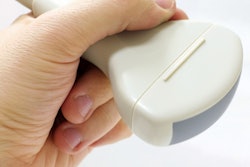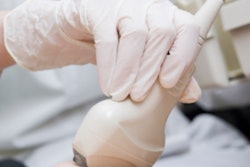NEW YORK CITY - Many residents and fellows are not being educated on the proper cleaning guidelines for ultrasound probes, a shortcoming that may increase the risk of patient infection, according to research from the University of Texas Medical School in Houston.
"Lack of instruction on appropriate cleaning jeopardizes patient safety, and it is an absolute professional obligation and priority," said Dr. Brian Heaps. He presented the institution's research during a scientific session Saturday at the 2009 American Institute of Ultrasound in Medicine (AIUM) convention.
Recent research has found that abdominal and vaginal probes can be sources of infections, a risk that can be reduced by implementing cleaning guidelines. Despite these known risks, ultrasound training programs typically offer limited instruction on cleaning ultrasound probes, Heaps said.
To assess the knowledge of the AIUM's recommendations on ultrasound probe cleaning recommendations by senior-level obstetric (OB) residents, maternal-fetal medicine (MFM) fellows, and reproductive endocrinology (REI) fellows, the research team sent an anonymous questionnaire to obstetrics and gynecology residency directors and MFM and REI fellowship directors in five U.S. metropolitan areas.
These directors were asked to distribute the questionnaires to their senior OB residents, MFM fellows, and REI fellows. Of the 635 surveys sent out, 127 (20%) were completed. Of those who responded, 77% were ob/gyn residents, 15% were MFM fellows, and 8% were REI fellows. Women made up 72% of the survey group, and the median age of the respondents was 31.
Of the 127 respondents, 83% reported they had no formal training in the cleaning and maintenance of ultrasound equipment. In addition, 94% were unaware of the AIUM's guidelines for proper probe cleaning.
Of those who had received instruction on the use and maintenance of ultrasound probes, 62% correctly identified the appropriate timing for when to clean abdominal probes, compared with 58% who had not received training. Similar findings were found on the probability of identifying the cleaning method of these probes (52% versus 59%, respectively).
However, respondents who had received training in ultrasound equipment cleaning and maintenance did have significantly better understanding of the timing (100% versus 86%) and methods (76% versus 49%) for vaginal ultrasound probe cleaning than those who hadn't received training (p = 0.02).
The research findings show that there is a knowledge deficiency in proper cleaning techniques for ultrasound probes in training programs, Heaps concluded.
By Erik L. Ridley
AuntMinnie.com staff writer
April 6, 2009
Related Reading
Future of ultrasound will require technology, educational gains, April 4, 2009
Radiology faces declining share of musculoskeletal ultrasound, January 20, 2009
Ultrasound can boost imaging use in developing countries, November 21, 2008
Ultrasound scan protocols for nonmedical personnel offer value, April 29, 2008
Handheld ultrasound performs well in ob/gyn applications, March 14, 2008
Copyright © 2009 AuntMinnie.com




















